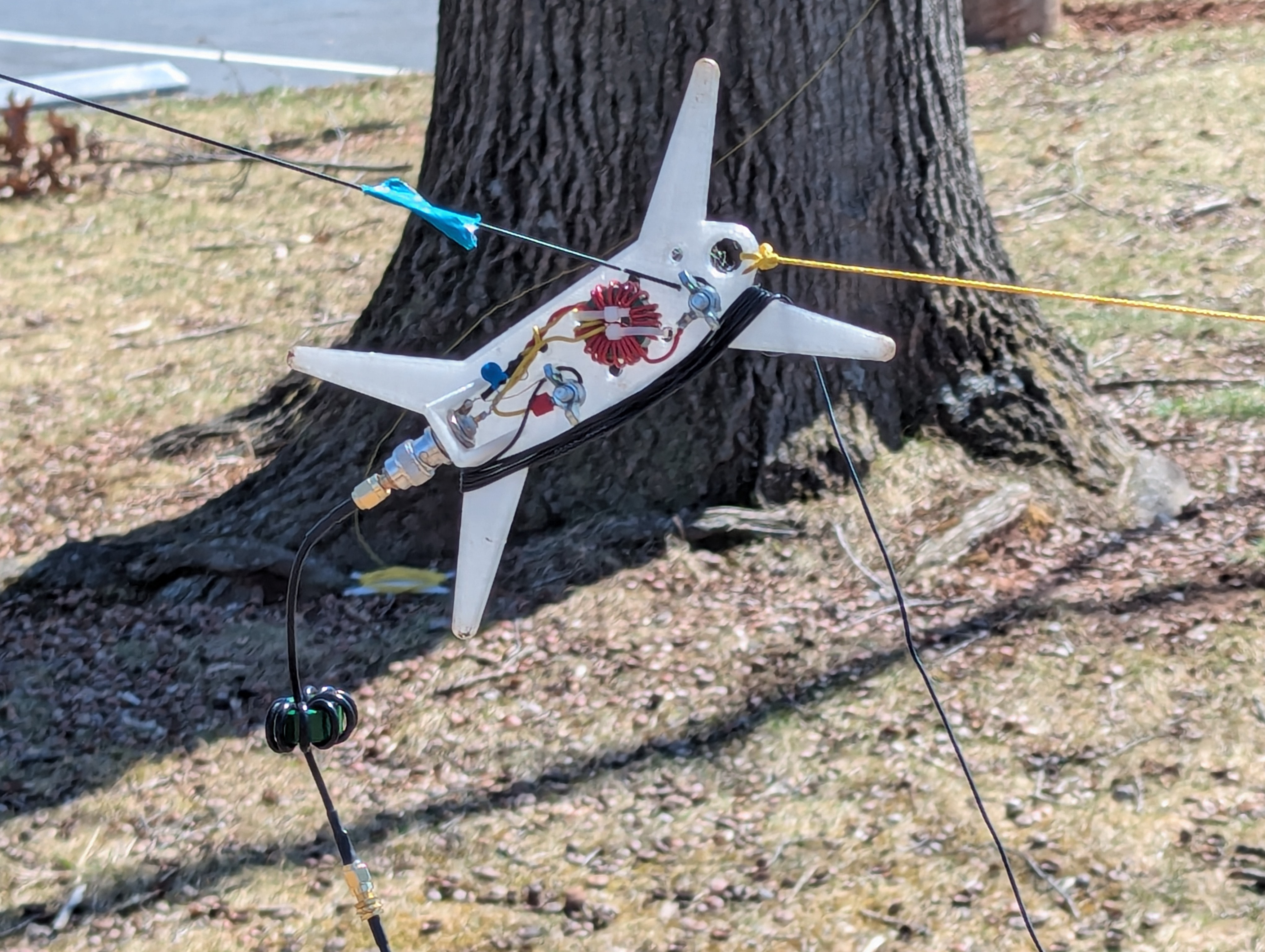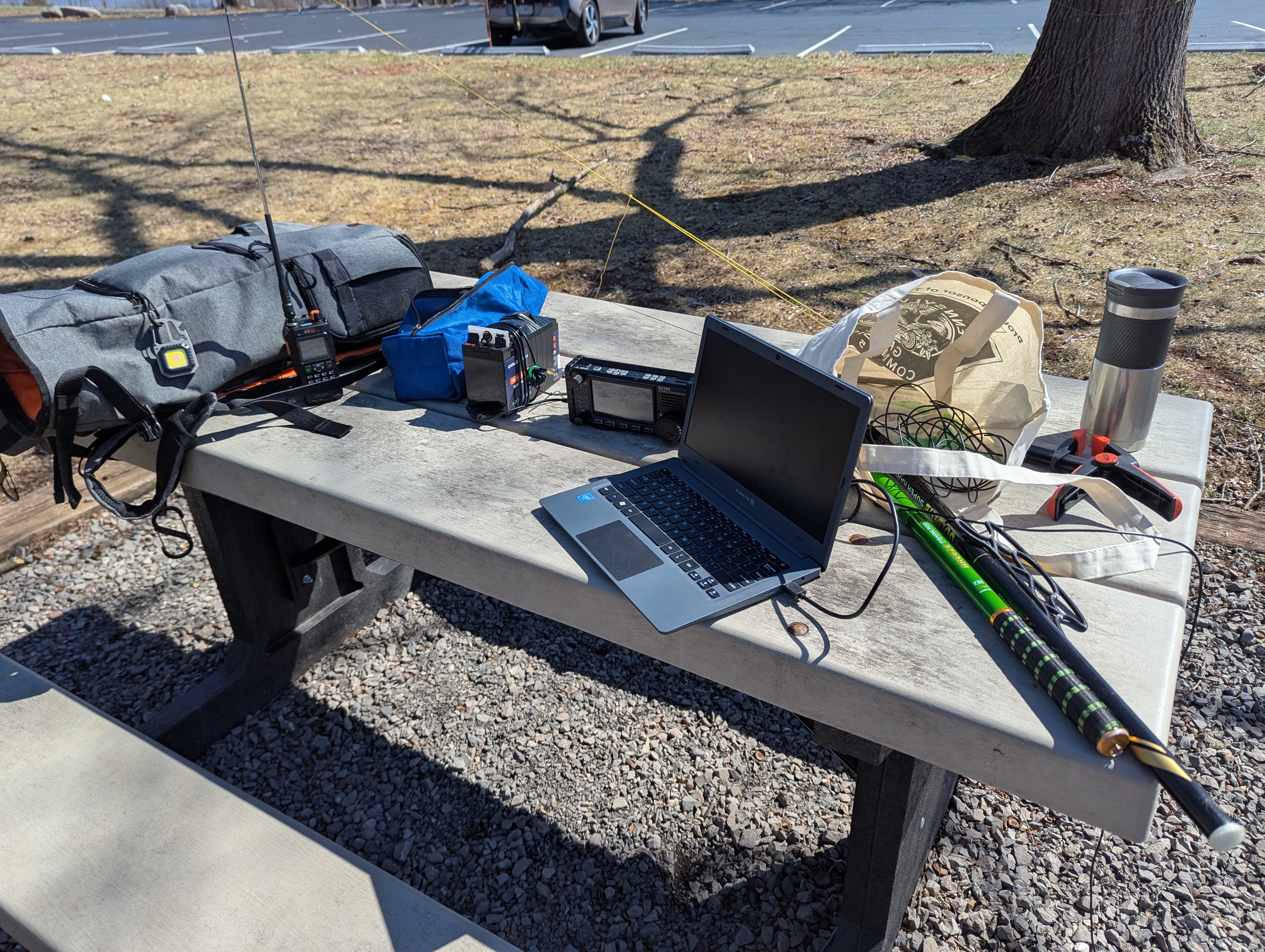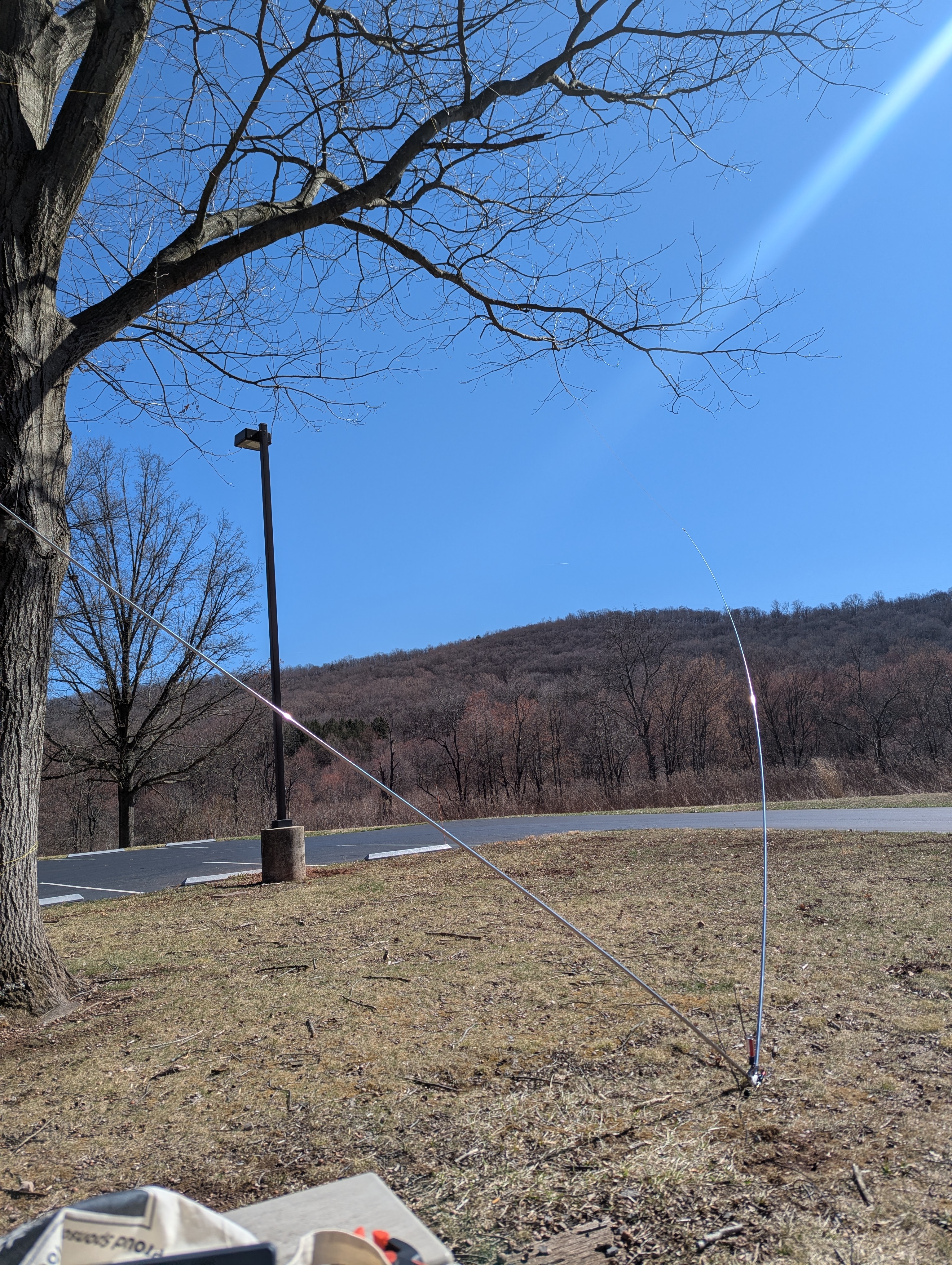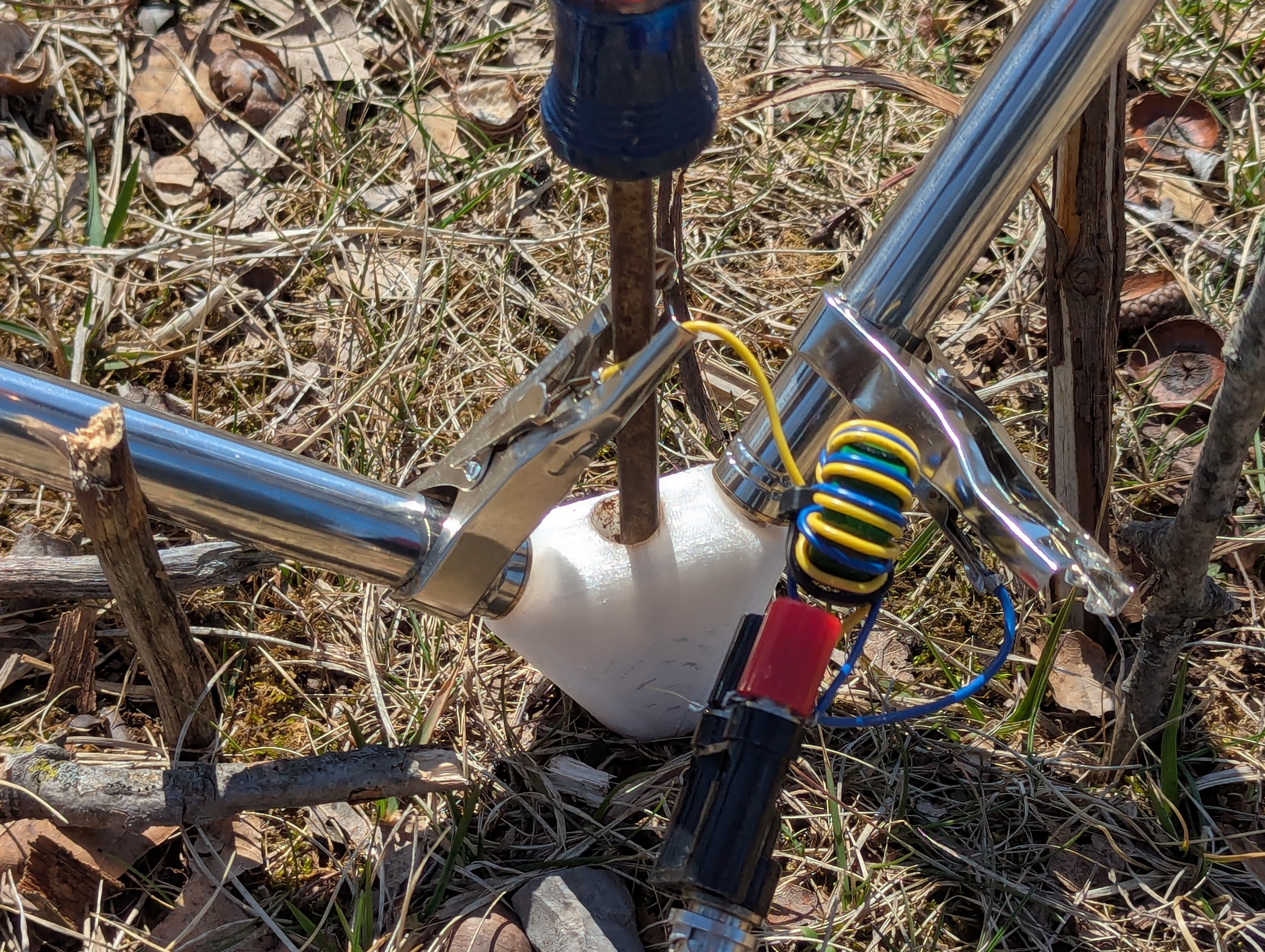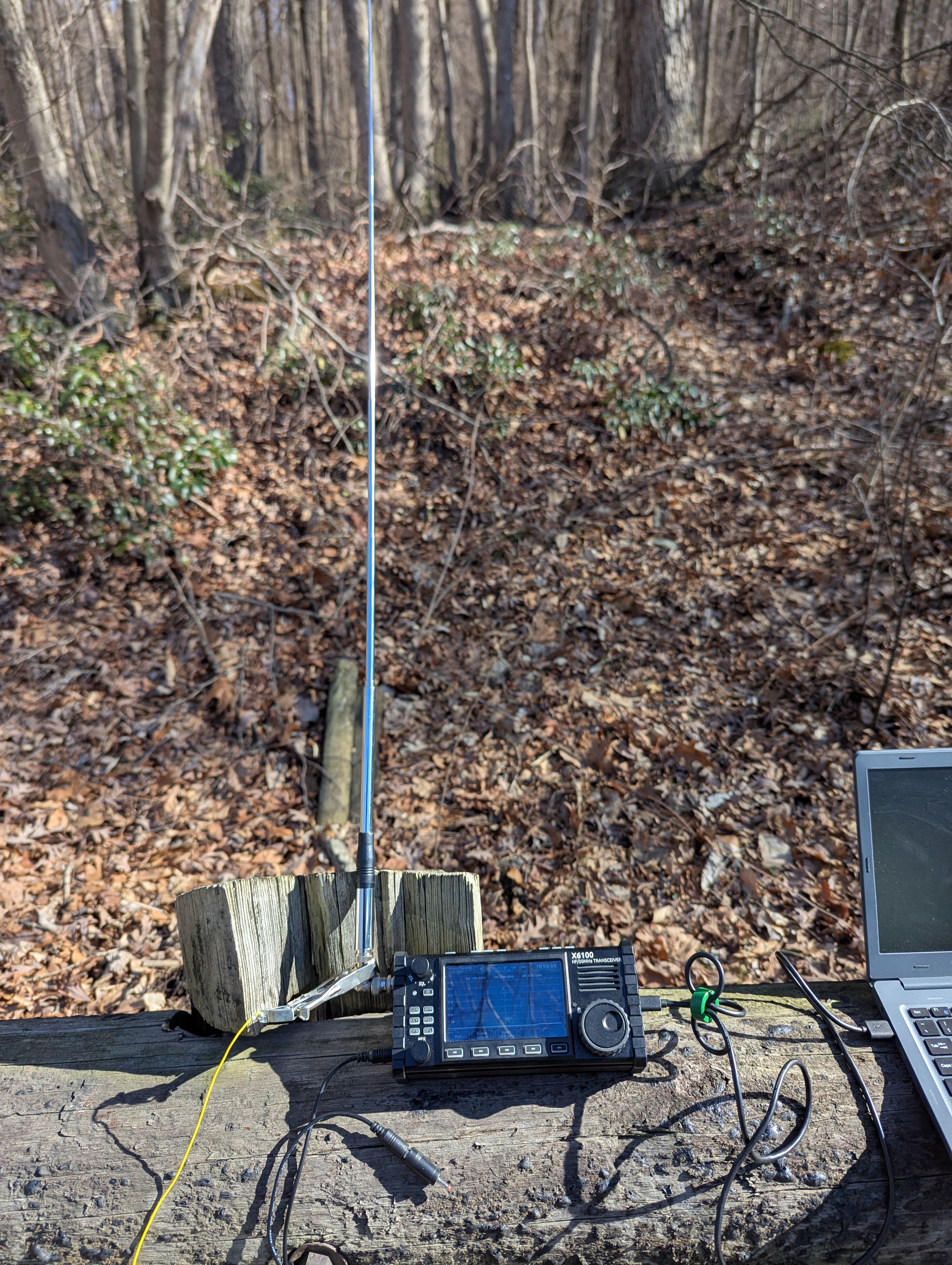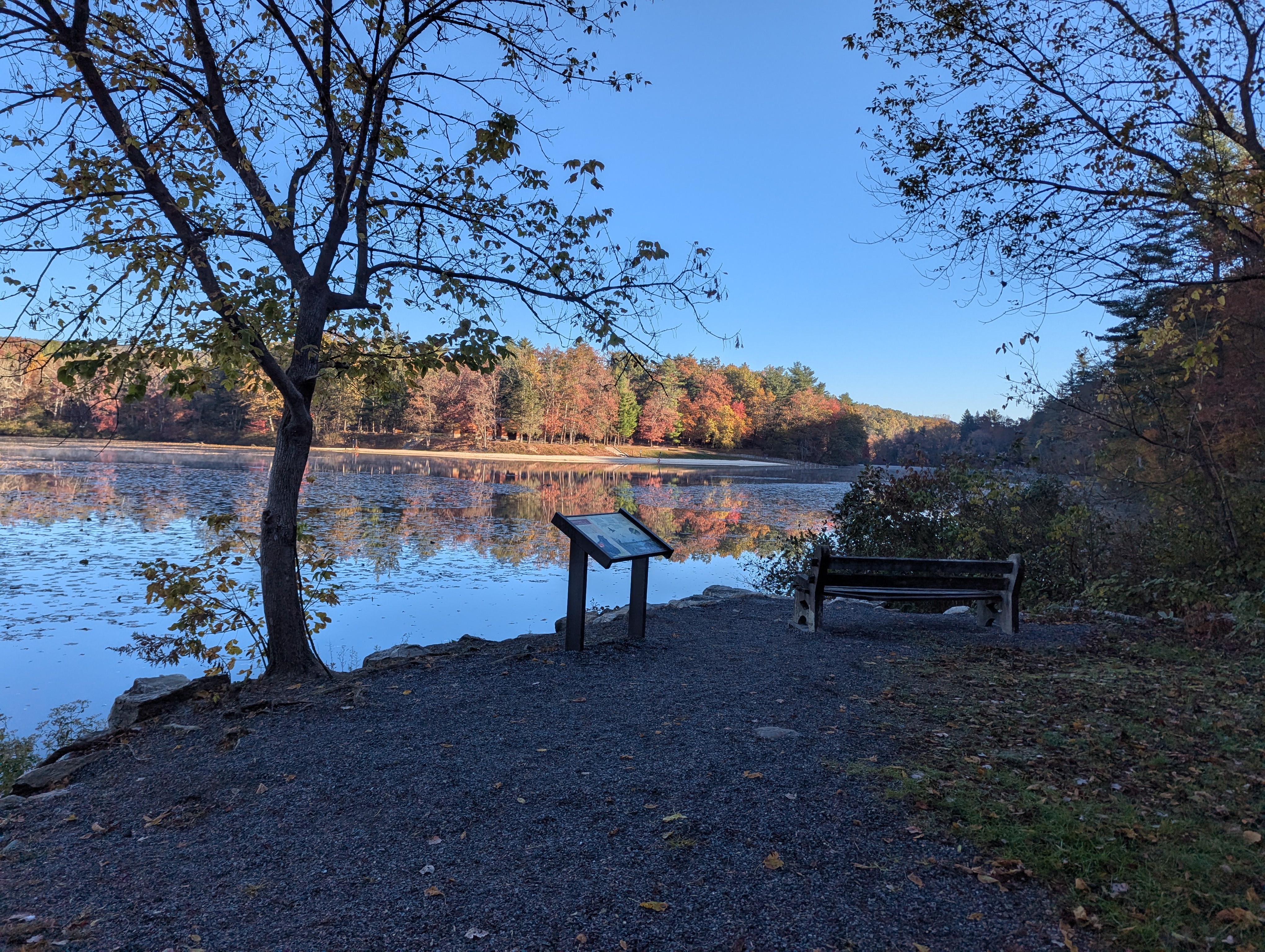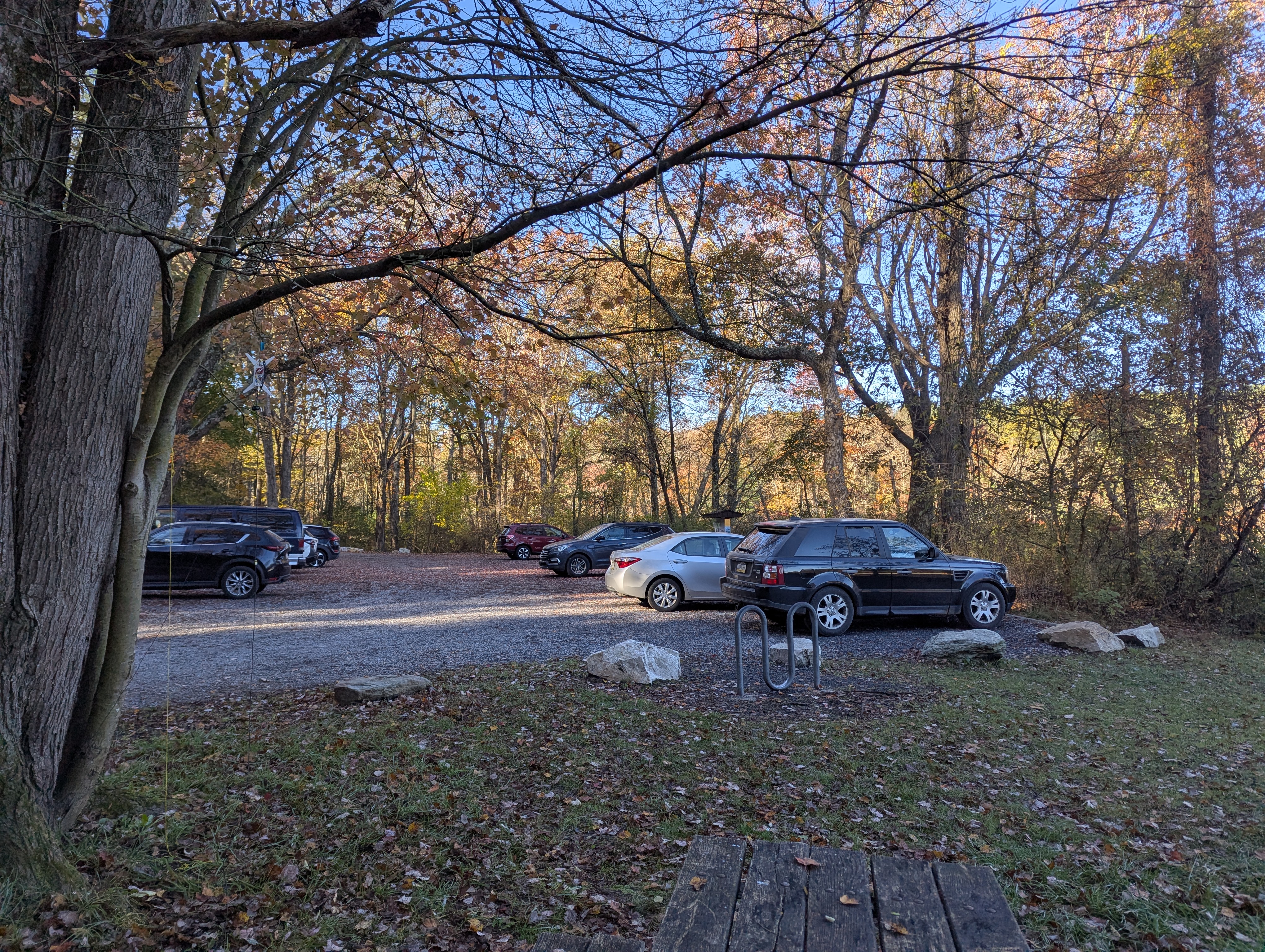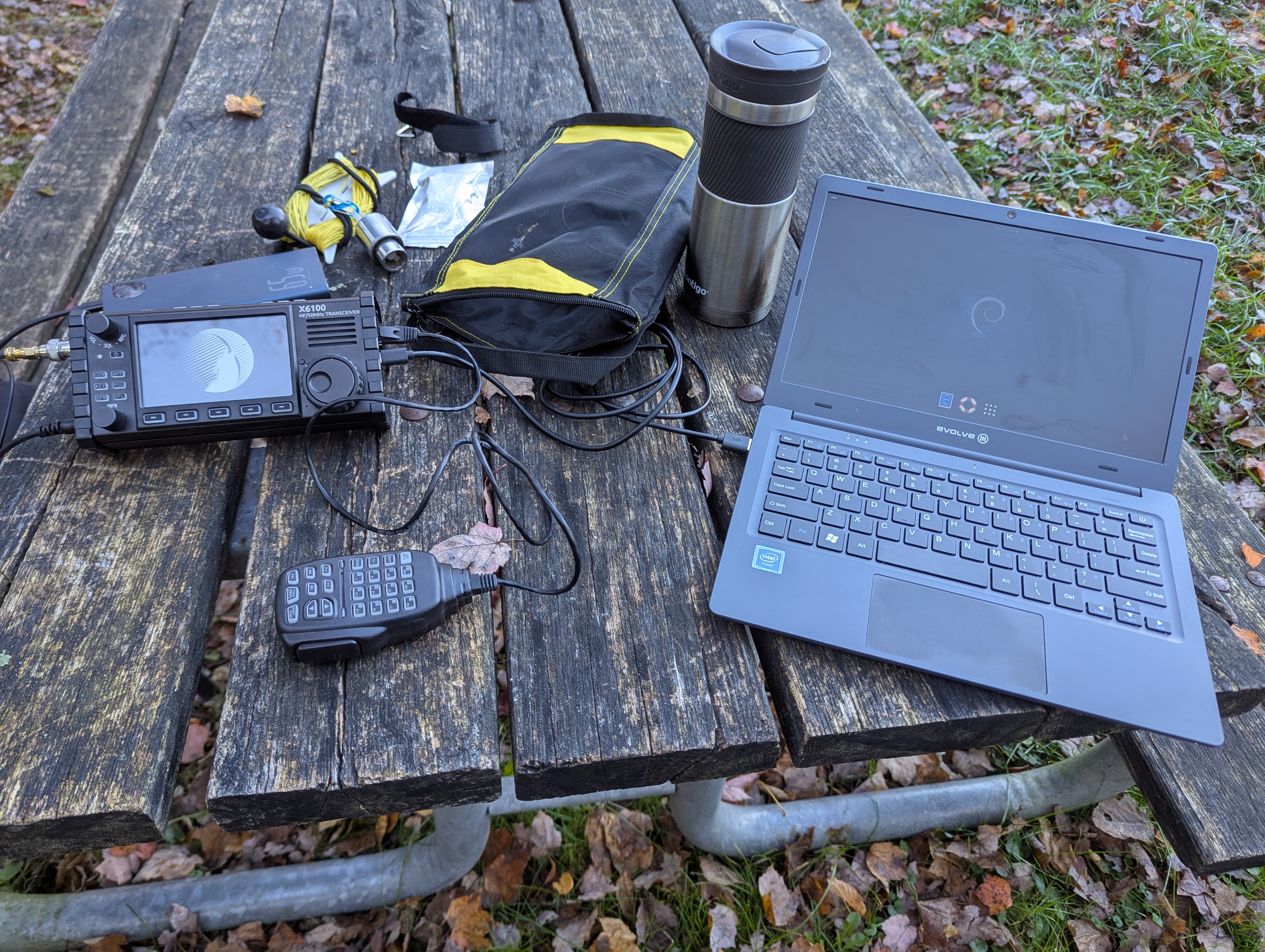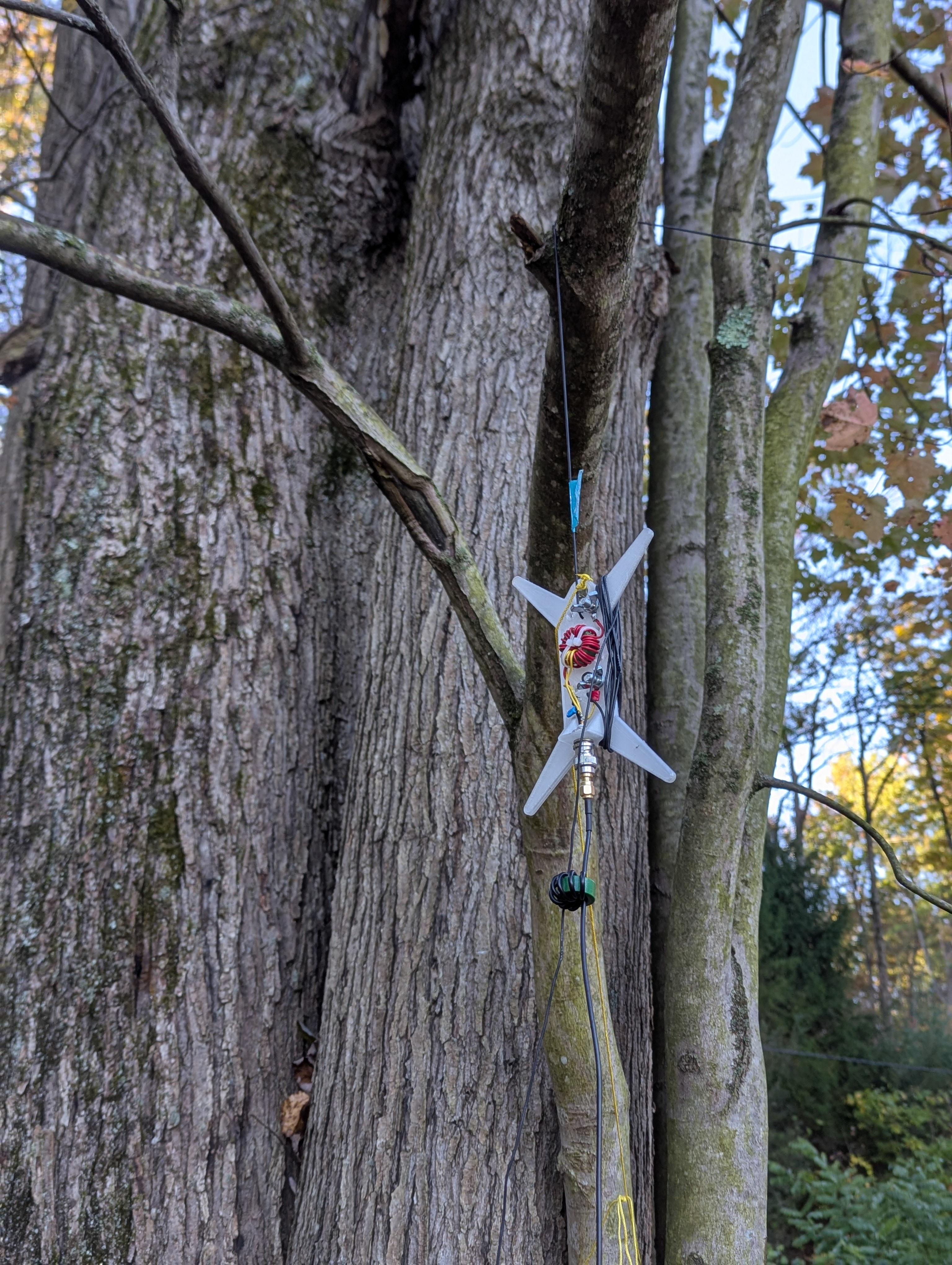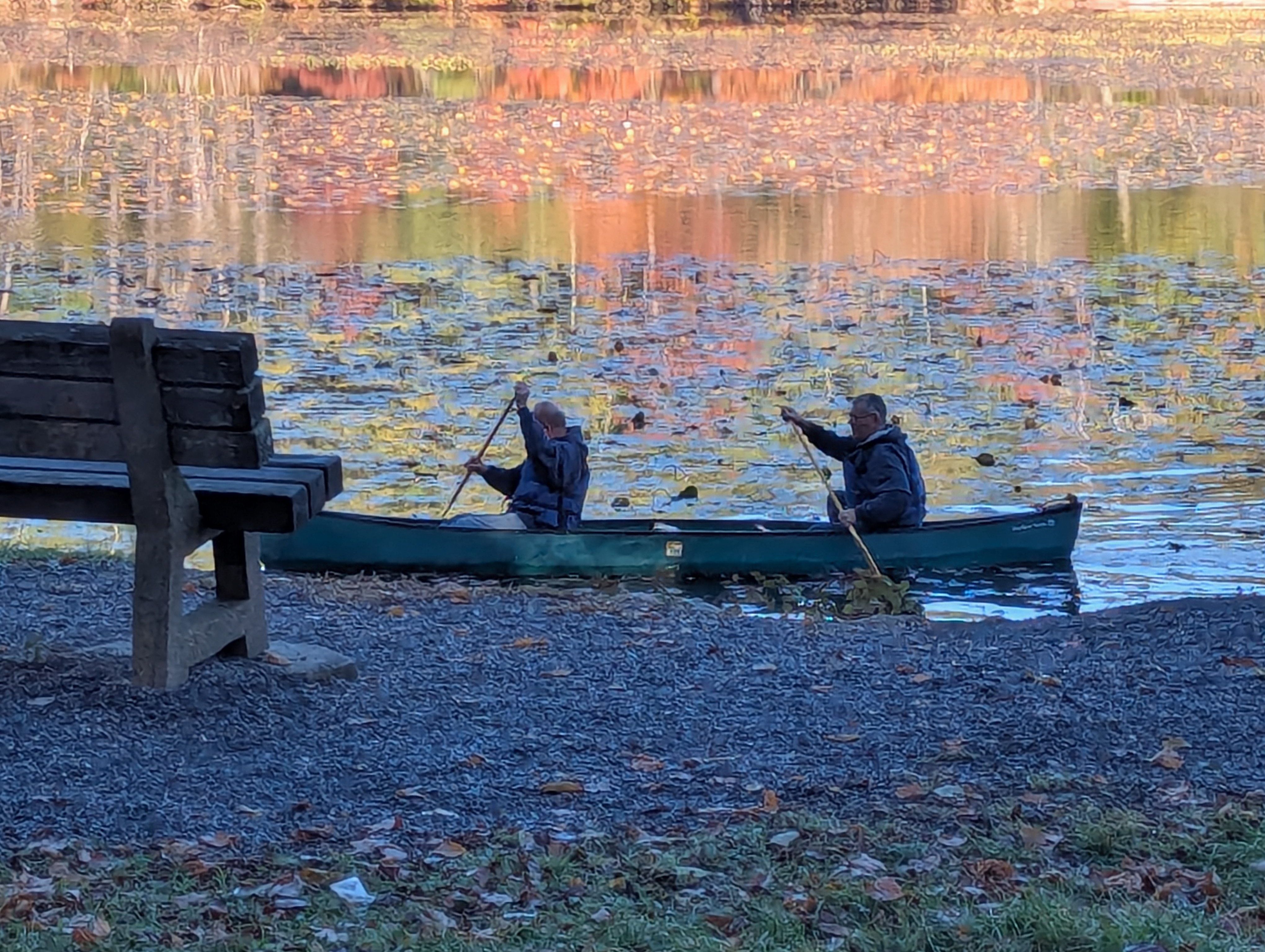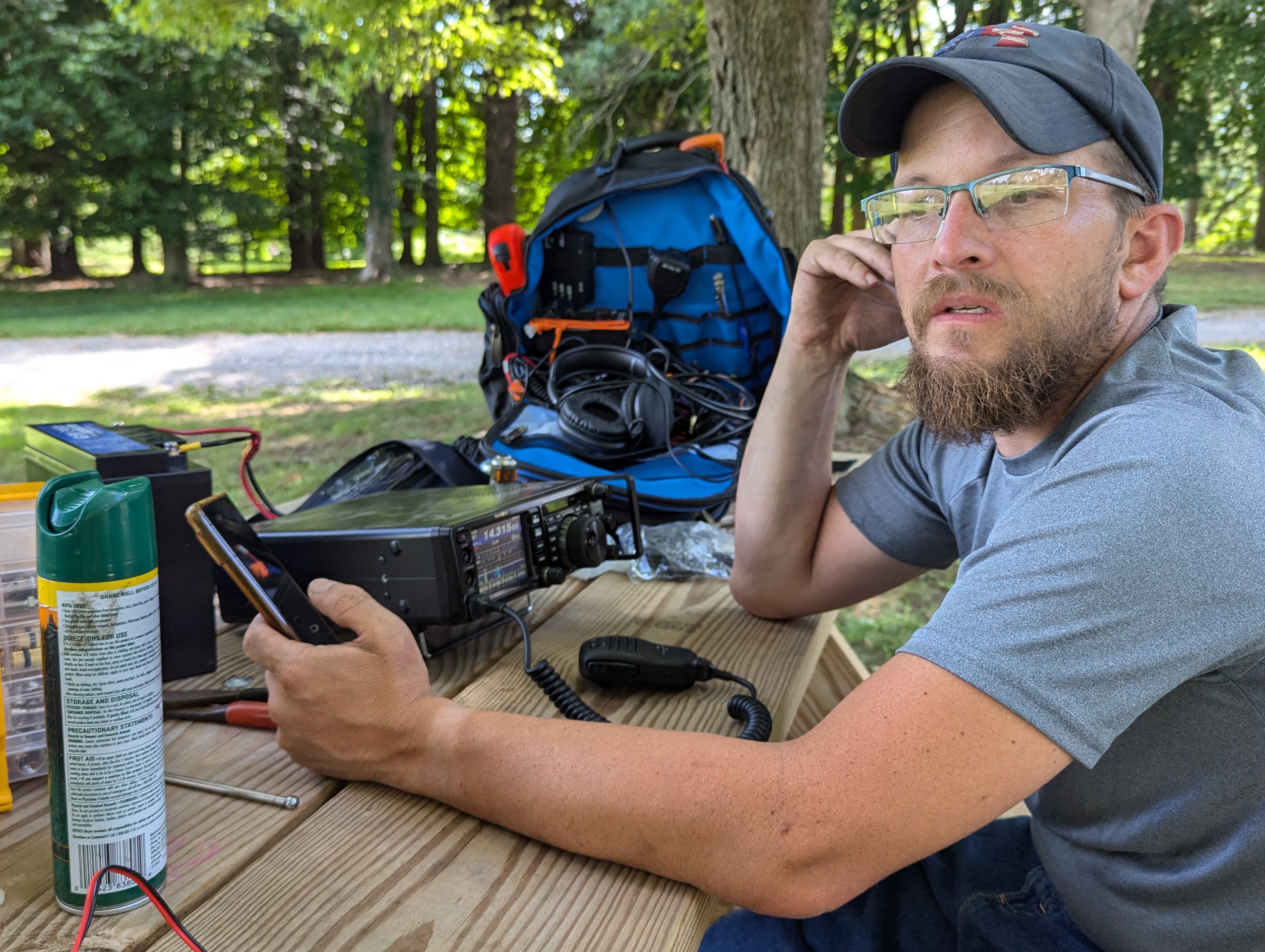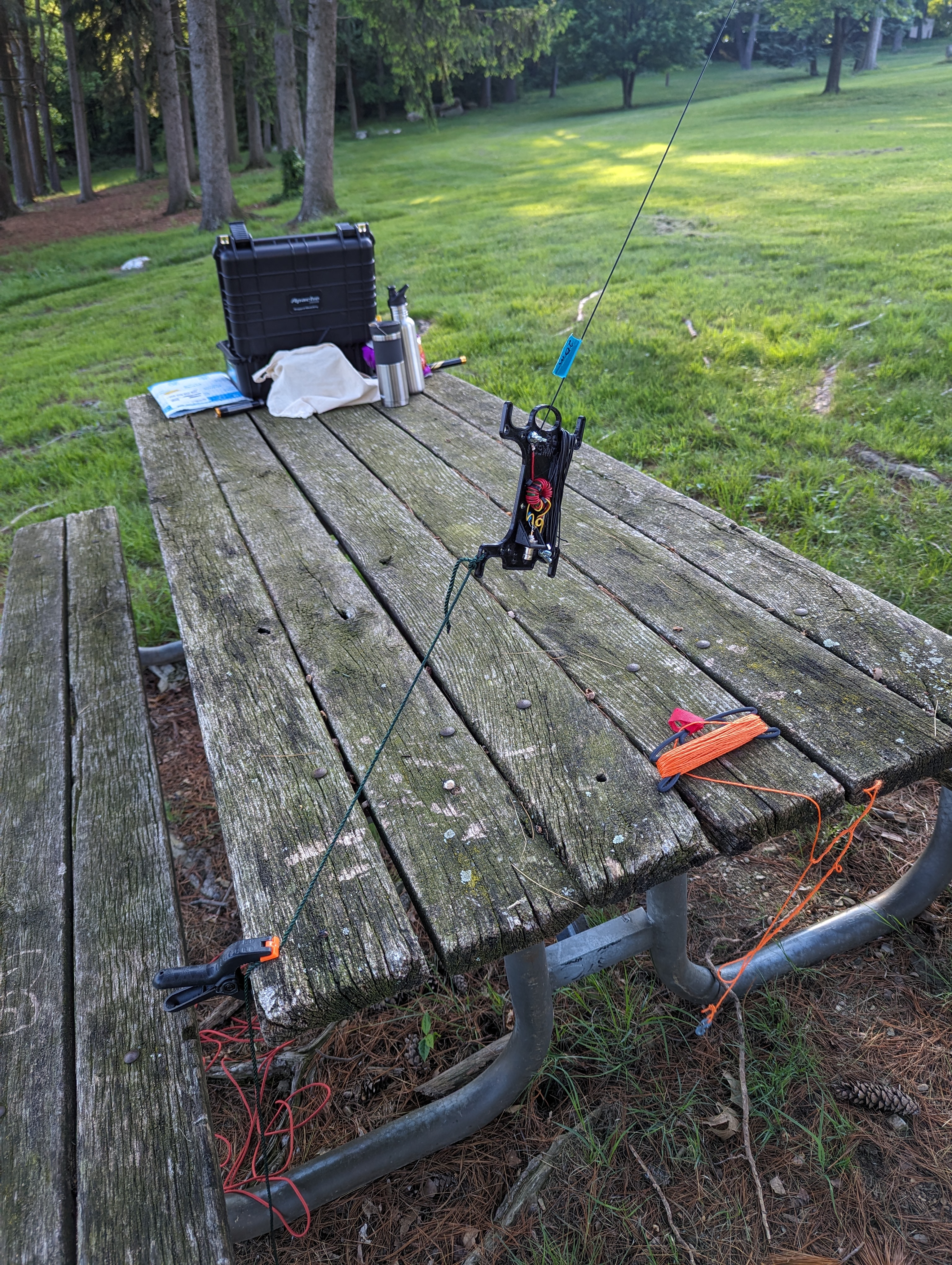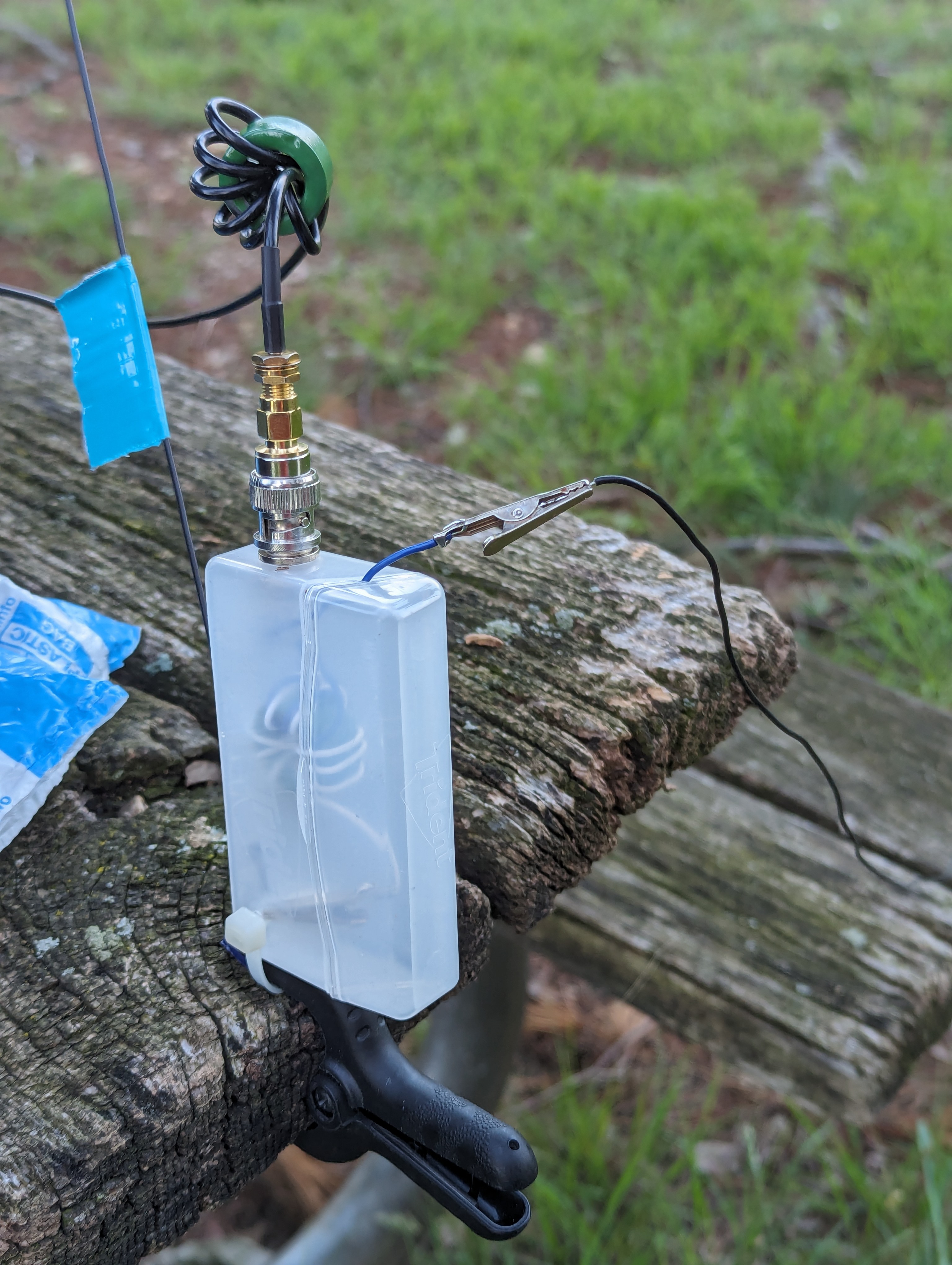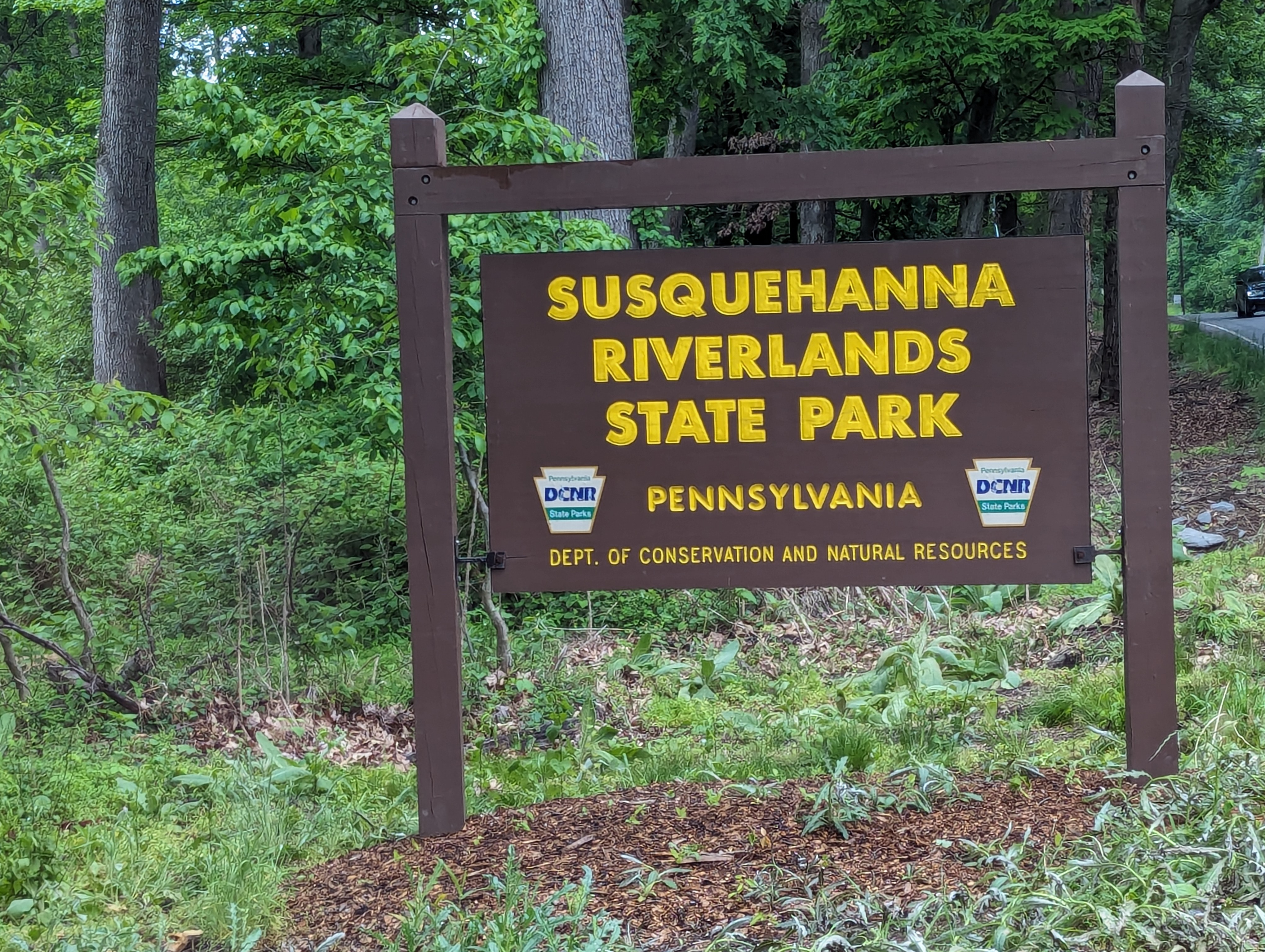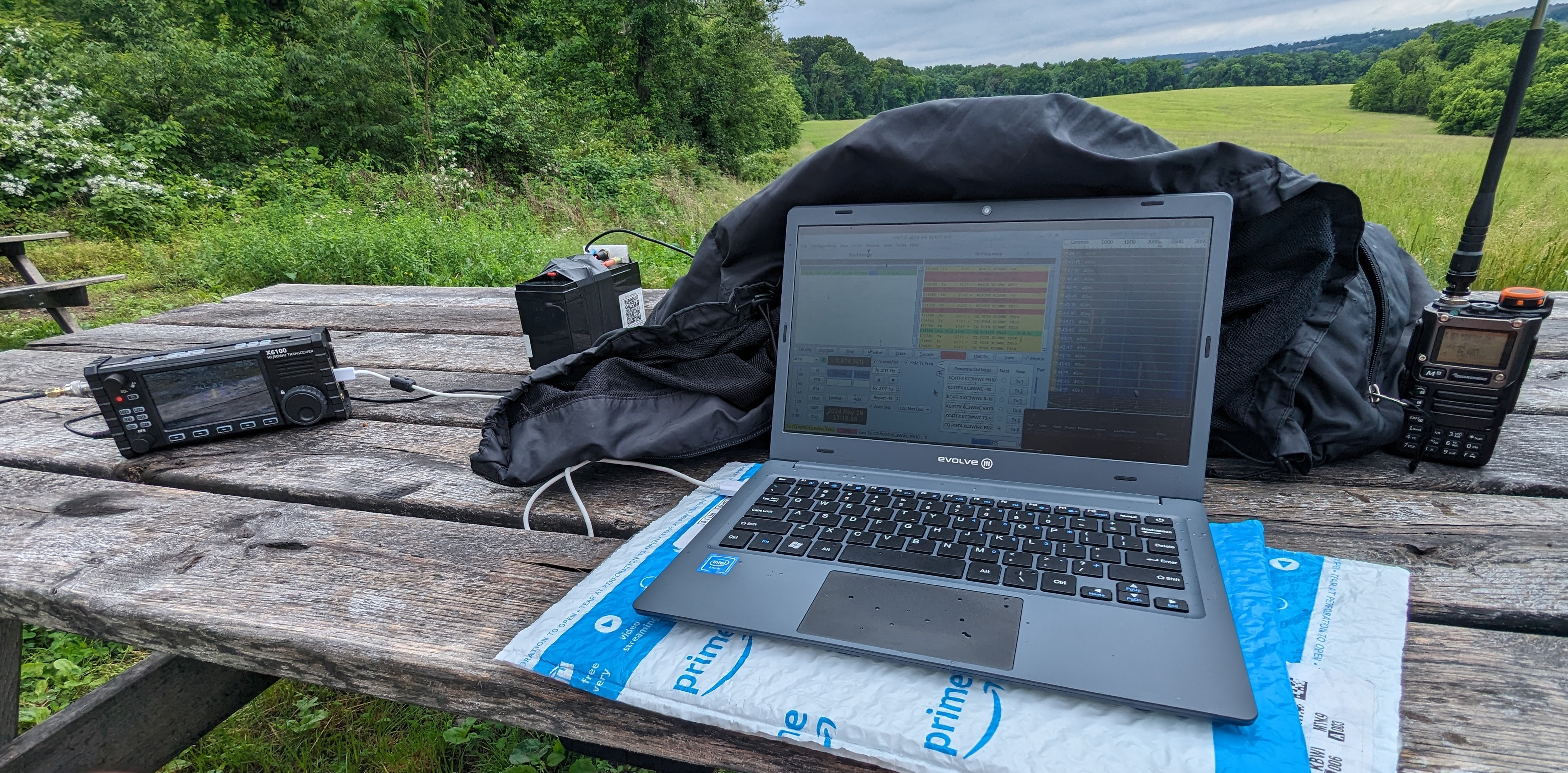I compared the 20m EFHW
with the 12.5m EFRW
at Sam Lewis (US-1418).
I threw really high
and made both antennas nearly vertical
into high trees,
not inverted-v.
EFHW could hear pretty well,
and the SWR sweep showed again that I could shorten it,
so I did lower it and take off a few cm.
The EFHW didn’t seem to like its counterpoise.
With the counterpoise, it was giving me an SWR of 2-2.5:1
on 40m when I transmitted.
If I removed the counterpoise
or kept it coiled up,
the SWR was lower.
I still made most my contacts on 40m.
I think the radio may have again been
interfering with the mouse when transmitting.
I already had chokes on both ends of the feed line,
but adding the counterpoise helped
that common mode interference.
It was a rough day.
The EFRW would not tune well at all on 40m
with or without its single counterpoise.
That surprised me greatly,
because I had tested that same unun
with my existing EFRW antenna
out the front window at home.
I wonder if it had something to do with each antenna
being mostly vertical.
I wonder if they needed more radials
instead of a single counterpoise.
K4OGO (Walt of Coastal Waves and Wires)
always adds so many radials to his verticals.
This had me questioning everything.
I thought I was doing something really good
by getting the wires high and vertical.
When I brought the radio home
and connected to the same old EFRW,
it was again performing normally.
I also learned that the POTA website
cuts off your activation and starts a new one
at 00:00UTC, 8pm,
so I ended up
with 2 QSOs counting
toward a second (incomplete) activation
at the park.

